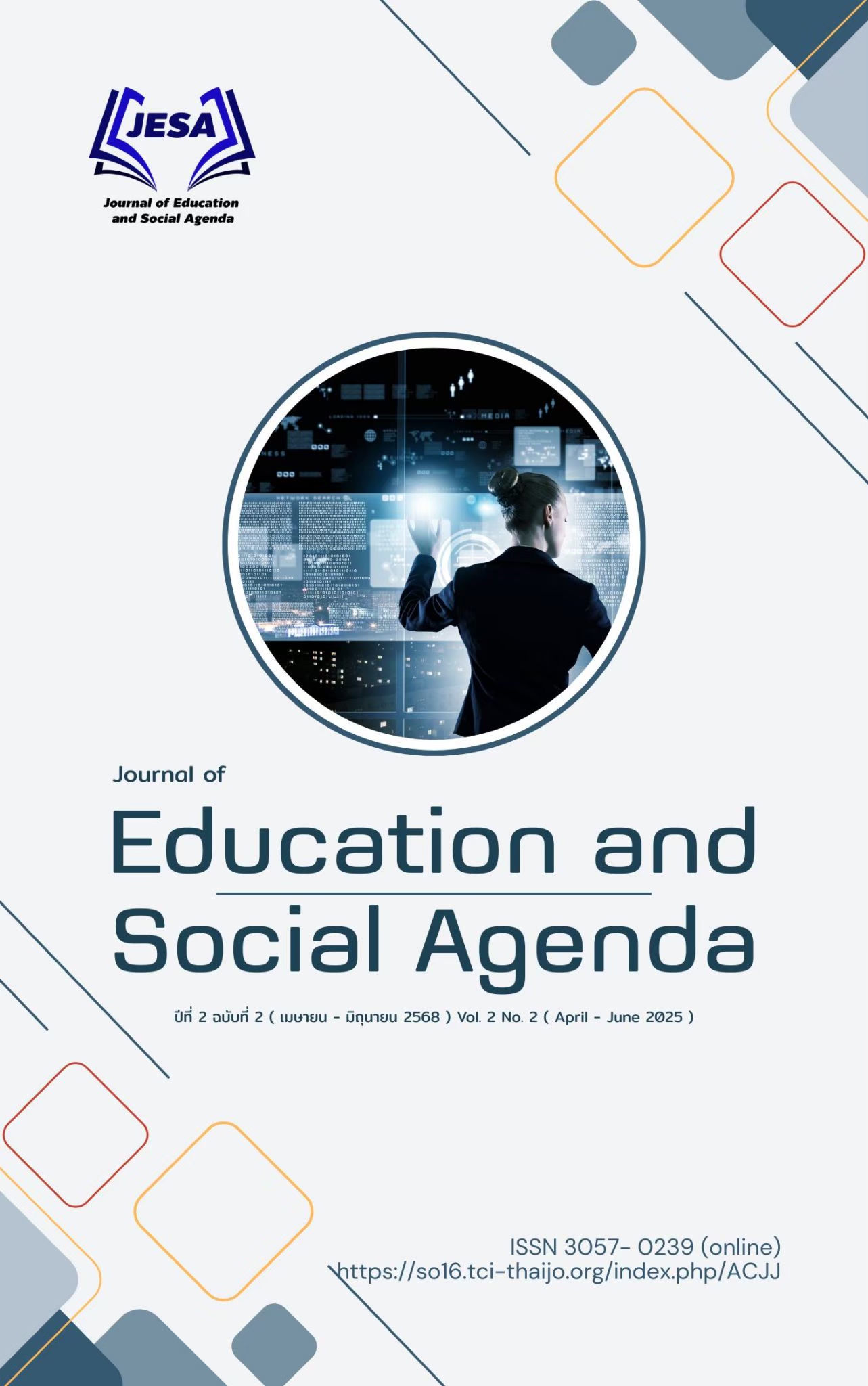Contextual Integration Teaching Techniques: A New Approach for Developing Thai Language Skills in Primary School Students
Keywords:
Teaching Techniques , Context-Based Integration , Innovative Approaches, Thai Language Skill Development in Primary EducationAbstract
This academic article aims to present a context-based integrated teaching technique for developing Thai language skills among primary school students in Thailand. The study finds that linking learning to the natural environment, culture, and local wisdom is crucial in motivating students and enhancing their engagement. The proposed approach utilizes the TR-Stand process, which comprises seven key steps: 1) topic selection, 2) discovery, 3) needs assessment, 4) activity design, 5) activity implementation, 6) result recording, and 7) discussion and reflection. Furthermore, developing localized curricula, teacher training and development, and establishing collaborative networks among schools, communities, and related agencies are essential factors for ensuring effective and sustainable integrated learning. This teaching approach also fosters Thai language proficiency; nurtures pride in local culture and strengthens long-lasting connections between schools and communities.
References
กรุณา ลิ้มประเสริฐ. (2564). การจัดการเรียนรู้รูปแบบสตีมศึกษาเพื่อพัฒนาความคิดสร้างสรรค์ ในโรงเรียนประถมศึกษาขนาดเล็ก. วารสารศึกษาศาสตร์ มมร, 9(2), 168-182.
จิรกิตติ์ เนาวพงศ์รัตน์. (2562). ผลการจัดการเรียนรู้พลศึกษาตามแนวคิดการเรียนรู้เชิงรุกที่มีต่อผลสัมฤทธิ์ทางการเรียนและความสามารถในการแก้ปัญหาของนักเรียนมัธยมศึกษาปีที่ 2. (วิทยานิพนธ์ครุศาสตรมหาบัณฑิต สาขาสุขศึกษาและพลศึกษา). คณะครุศาสตร์ : จุฬาลงกรณ์มหาวิทยาลัย.
ชนิกานต์ โพธิ์นอก. (2560). บทบาทครูยุคใหม่สำหรับศตวรรษที่ 21. เข้าถึงได้จาก https://www.tkpark.or.th
ดุสิต เครืองาม และคณะ. (2562). การเป็นครูมืออาชีพในศตวรรษที่ 21. (อัดสำเนา)
ตรีคม พรมมาบุญ. (2561). การพัฒนาแบบวัดคุณลักษณะครูยุคใหม่สำหรับนักศึกษาครุศาสตรบัณฑิตชั้นปีที่ 4 มหาวิทยาลัยราชภัฏสุรินทร์. Journal of Educational Measurement Mahasarakham University, 24(1), 138-151.
ผดุงชัย ภู่พัฒน์. (2561). การพัฒนาตัวชี้วัดประสิทธิภาพการจัดการเรียนรู้ของสถานศึกษาในระดับการศึกษาขั้นพื้นฐาน. กรุงเทพฯ : พริกหวานกราฟฟิค จำกัด.
พระมหาประยุทธ์ ปยุตฺโต (ยาวิชัย). (2564). การจัดการเรียนการสอนแบบบูรณาการในชั้นเรียน. Journal of Roi Kaensarn Academi, 6(12), 329-341.
พิมพ์พันธ์ เดชะคุปต์ และพเยาว์ ยินดีสุข. (2560). ทักษะ 7 C ของครู 4.0. กรุงเทพฯ : โรงพิมพ์แห่งจุฬาลงกรณ์มหาวิทยาลัย.
มนรัตน์ แก้วเกิด. (2562). กลยุทธ์การบริหารงานวิชาการโรงเรียนมัธยมศึกษาตามแนวคิดความเป็นพลเมืองดิจิทัล. (วิทยานิพนธ์ครุศาสตรดุษฎีบัณฑิต สาขาวิชาบริหารการศึกษา). คณะครุศาสตร์ : จุฬาลงกรณ์มหาวิทยาลัย.
วรพจน์ วงศ์กิจรุ่งเรือง. (2561). คู่มือพลเมืองดิจิทัล. เข้าถึงได้จาก https://thaidigizen.com/wp-content/uploads/2018/06/DigitalCitizenship-Book-ok.pdf
วิชัย วงษ์ใหญ่ และมารุต พัฒผล. (2562). การจัดการเรียนรู้ในยุค Disruptive Innovation. กรุงเทพฯ : ศูนย์ผู้นำนวัตกรรมหลักสูตรและการเรียนรู้.
ศุภกร สุขยิ่ง และคณะ. (2560). การจัดการเรียนรู้แบบใช้บริบทเป็นฐานร่วมกับการใช้ข่าวเป็นสื่อ เรื่อง สภาพสมดุลเพื่อพัฒนาการรู้เรื่องวิทยาศาสตร์ของนักเรียนชั้นมัธยมศึกษาปีที่ 4. วารสารวิชาการศึกษาศาสตร์, 18(2), 31-44.
สำนักงานเลขาธิการสภาการศึกษา. (2560). แนวทางการพัฒนาทักษะแรงงานไทยในศตวรรษที่ 21. กรุงเทพฯ : สำนักงานเลขาธิการสภาการศึกษา กระทรวงศึกษาธิการ.
สำนักงานคณะกรรมการการศึกษาขั้นพื้นฐาน. (2563). แนวทางการจัดการเรียนรู้สู่ความยั่งยืน. สืบค้นจาก https://www.obec.go.th/
สุขสันต์ สุขสงคราม. (2564). แนวคิดการบริหารแบบวงจรคุณภาพ (PDCA) กับการบริหารแบบพระพุทธศาสนา. วารสารธรรมวัตร, 2(1), 39-49.
อภิรดี ไชยกาล. (2561). การสอนภาษาไทยเป็นภาษาที่สองสำหรับเด็กชาติพันธุ์เขมรถิ่นไทย. Journal of Mekong Societies, 14(1), 109-132.

Downloads
Published
How to Cite
Issue
Section
License
Copyright (c) 2025 Asia Connect Journal

This work is licensed under a Creative Commons Attribution-NonCommercial-NoDerivatives 4.0 International License.
This article is published under a Creative Commons Attribution-NonCommercial-NoDerivatives 4.0 International License (CC BY-NC-ND 4.0), which allows others to share the article with proper attribution to the authors and prohibits commercial use or modification. For any other reuse or republication, permission from the journal and the authors is required.

